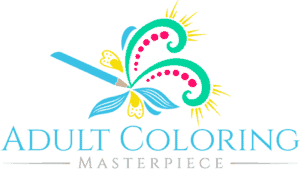Choosing a high-quality coloring pencil set is a great investment if you’re enjoying adult coloring and you want to take it to the next level. Pencils meant for kids or as classroom tools are outperformed by an artist-quality pack of pencils, and while the price tag of art pencils may be intimidating, it is more than worth the investment.
The best Japanese coloring pencils today are uni, Mitsubishi, and Tombow, with some others trailing along that are worth mentioning. During the rise of industrialization in the 20th century, two Japanese pencil companies stole the pencil manufacturing spotlight as they raced to create the perfect pencil. This race, of course, had other contending manufacturers in it as well, and the result is a great collection of pencils from Japan that are on the market today.
Japanese coloring pencils hit the market at the end of the 19th century, making them a latecomer to the wooden cased pencil industry. This is probably because kanji requires specific thicknesses of brushstrokes when composing a word, and pencils are not able to easily emulate that kind of differentiation.
Why Japan Went Nuts for Pencils and Stationery

While most stationery products were not originally invented in Japan, they were perfected by Japanese manufacturers as part of a general theme of history at the time. Japan wanted to showcase the ingenuity of design and cheap creation processes in all of its manufacturing at the time, and the country hit a home run with the pencil industry.
Japanese involvement with pencil manufacturing began with mechanical pencils when the Hayakawa Metal Industrial Laboratory revolutionized the internal mechanisms of mechanical pencils, so they were cheaper and easier to use. Originally invented in England, it was the Japanese who gave birth to the modern mechanical pencil.
Plastic erasers were also discovered in England and made perfect by Japanese manufacturers. Cheaper and more durable than traditional rubber erasers, they took the world by storm. Japan managed to revolutionize a lot of stationery and paper products, no doubt because it has a long-standing history with delicate art on hand-crafted paper.
Let’s explore some of the most useable brands on the market today.
Pressure and Pencil Hardness
It’s easy to get overwhelmed at an art store when looking at different kinds of pencils, especially when the packaging talks about hardness and softness. If you want to experiment with different core consistencies in graphite pencils, then the Hi-uni art set is a prime choice.
Every pencil has a different texture when applied to the paper, so they’ll each have a different effect even though you’re essentially just using classic pencil grey. They’re also a great tool if you want to challenge yourself with monochromatic pieces or greyscale coloring instead of the garish vibrancy that color can cause.
Another great Japanese pencil company, Tombow, creates a set of pencils with different lead consistencies for exercises in pressure control and shading. These pencils are known for how dark they appear on the page, and the different kinds of lead softness provided in this set are great for experimentation.
The harder a pencil is, the more it is like the standard writing pencil that most people think of when pencils first come up. The softer the lead is, the more depth it offers, but the lines created become less crisp. This differentiation is wonderful when creating shading and color saturation, so a monochromatic set like those found in the Tombow MONO pack set is a great beginner tool when adventuring with advanced coloring.
Muji Colored Pencils
Muji colored pencils are high quality and come with a traditional Japanese packaging aesthetic that is also modernly mindful of sustainability. These pencils come in a paper tube pencil holder and do not have any coating on the outside of the pencil to hide the wooden pencil shaft. The core is somewhat soft, which is great for artists who like their pencils to glide more than drag.
Soft pencils are great for people who are just starting to experiment with shading in their coloring pieces. Because less pressure is needed for the tooth of the paper to grab the graphite of a softer pencil, the depth of color and color saturation possible is dramatically increased. Soft pencils are a great way to start coloring enhancements in your adult coloring adventures.
While lots of soft pencils fall apart, these pencils don’t suffer from the same crumbling that happens with other softer pencils that are pushed too hard. Soft pencils tend to fall to bits, ruining the tip of the pencil needed to color properly. Muji colored pencils are well known for delivering what soft pencil users want while still holding them together when used by an experimenting beginner.
The Vermillion and Prussian Blue Pencil
One of the best first tools to use on a coloring piece is the vermillion and Prussian blue pencil by Uni Mitsubishi. Almost everyone is familiar with a uni-ball pen, and the same Japanese company creates a great basecoat coloring pencil. One side is a reddish hue while the other end is a blue color which is perfect for doing highlights and drawing in shading. Using this pencil correctly takes an understanding of the color wheel, which is a great way to practice your understanding of color relations while coloring.
For people trying to emulate the feeling of drawing your piece while coloring, this pencil is a great choice because it allows for some of the more detailed layerings that need to take place for a drawing to have a three-dimensionality to it.
Colleen Pencils
While these pencils are Thai now, they were originally manufactured by a Japanese company. Like the needed vermillion and Prussian blue pencils in a beginner’s kit, these pencils offer light and dark colors paired together but in much larger sets and color varieties.
If having two colors that pair and oppose each other well on one pencil is in your wheelhouse, then these are the pencils for you. The price is low, but their quality makes them an international coloring contender.
Waxy and Quality Pencils

If you like pencils that have a waxier texture when the color is laid down on a page, then Pentel pencils are your answer. Pentel is a Japanese company more famous for its felt-tipped pens, but the pencil set it offers is great for adult coloring artists, especially ones that are on the go.
A waxier drawing experience does result in some pilling when pressure is being applied, but this can be carefully wiped away while coloring your piece. The great thing about waxy pencils with relation to adult coloring is it’s much less prone to wipe on an opposing page than a creamier alternative. If bleeding colors and rub-off ruin the coloring experience for you, then these pencils should be your top choice.
Erasable Pencils
The ability to erase during the coloring process will produce another layer of effects to a drawing that simple coloring won’t do. You can procure an eraser and pick any colored pencil and see how well it erases, or you can lean into experimenting with erasing and get a set of erasable colored pencils.
Uni Mitsubishi is again a hard hitter in this category with their Uni Arterase pencils because the markings erase well. Most colored pencils cannot be fully erased, and while these also cannot fully be wiped from the page, they perform better than almost any alternative. They come in a variety of color packs, so you can decide if you want the erasable effect for just some colors or if you want a large spectrum of color choices.
Check out more colored pencil recommendations HERE.
Coloring Pencils Designed for Adult Coloring
The Uni No. 888 pencils come in a pack of 36 and are generally considered the safest bet when venturing into the coloring world. That’s because these pencils are specifically designed for the quality of paper in most retail coloring books.
They’re great when layered with one another, and they are somewhat smudgeable. They are not too smudgeable, though, since they’re designed for a book that’s closed and has pages rub against one another in transit. At the same time, they’re not the best at any one thing; their jack-of-all-trades approach to situations that can come up while coloring makes them a good first coloring pencil investment.
Japan’s contribution to the world of pencils cannot be understated, as the early manufacturing of wood pencils helped to define the object we see today when we sit down to color. Things like the use of incense-cedar wood from California as a cheap and durable casing for pencil graphite can be attributed to the ingenuity of Japanese manufacturers, and this ingenuity has fueled a modern industry of high-quality products.
Frequently Asked Questions
What is the “Steinbeck Stage” of pencils?
John Steinbeck, a famous author, would use pencils until the metal or end of the pencil was being held between his thumb and his index finger. When they got to this point, he threw them away. Many people feel this way about pencils.
Why are manual pencil sharpeners better than electric sharpeners?
You can’t see how much of the pencil you’re taking off with an electric sharpener. A manual sharpener lets you control how much of the pencil is getting shaved off, which reduces waste or over-sharpening until the tip breaks.
Why is it called pencil lead?
Pencils have never contained lead. Their cores are made of graphite, which was discovered in England during the 17th century. When graphite was first produced, it was super dark, and people called it “lead” due to its coloring.
Maximize the benefits of coloring with my free adult coloring eBook and sign up for my email newsletter HERE!
Disclaimer: The information provided by ColoringMasterpiece.com (“The Site”) is for general informational purposes only. All information on the Site is provided in good faith, however, we make no representation or warranty of any kind, express or implied, regarding the accuracy, adequacy, validity, reliability, availability, or completeness of any information on the Site. Under no circumstance shall we have any liability to you for any loss or damage of any kind incurred as a result of the use of the Site or Reliance on any information provided on the Site. Your use of the Site and your reliance on any information on the Site is solely at your own risk. This blog post is for educational purposes only and does not constitute legal advice. Please consult a legal expert to address your specific needs.
Terms and Conditions: https://coloringmasterpiece.com/terms-and-conditions/
